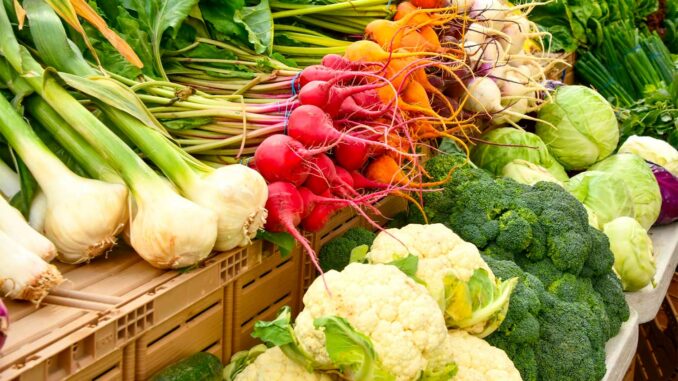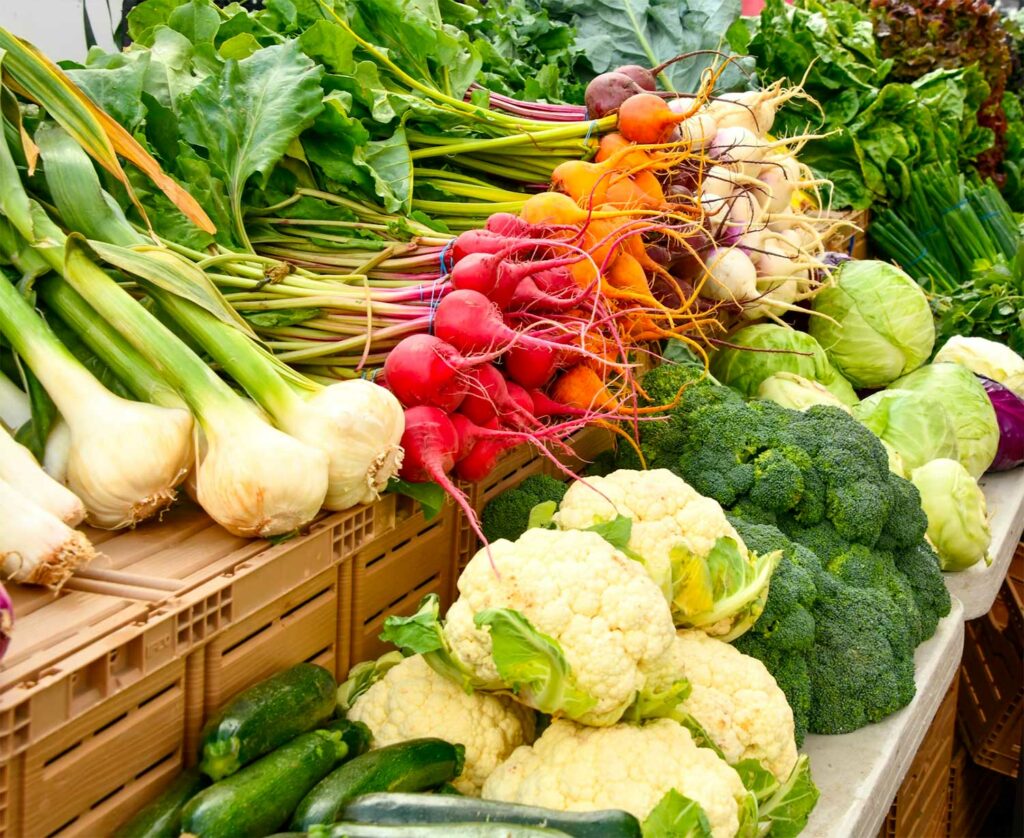
A clear, evidence-based guide to the five food groups—what they provide, key nutrients, benefits, portions, and how to build a balanced plate each day.
Food groups classify foods by shared nutrients, functions, and production methods. They help structure a daily plate that is adequate, varied, and safe. This guide explains the five main groups—fruits and vegetables; grains and legumes; meats, fish and eggs; dairy and dairy products; and fats—using current nutrition science and real-world examples. It details what each group contributes, typical portions, and how to align choices with a balanced diet. It also shows how to control saturated fat and trans fat, reach targets for dietary fibre and omega-3, and cover essential minerals such as calcium and iron. Practical examples translate grams into plates. The aim is simple: better choices, less guesswork, and meals that are both appealing and protective across a lifetime.
The framework that makes food groups useful
Food groups are not marketing labels. They are a practical way to combine complementary nutrients at each meal. Proteins supply amino acids for tissue repair. Carbohydrates and fats provide energy. Vitamins, minerals, and bioactive compounds support immunity, growth, and metabolism. Grouping foods with similar profiles avoids gaps and reduces excess. It also mirrors how foods are produced: grains and legumes are harvested and dried; dairy is collected and often fermented; fats are pressed or rendered; animal-source foods are raised or fished; fruits and vegetables are grown and eaten fresh or minimally processed.
A daily plan should hit three quantitative anchors. Aim for at least 400 g of fruits and vegetables (14 oz). Reach about 25 g of dietary fibre (0.9 oz). Keep fats mainly unsaturated while limiting saturated fat to below 10% of total energy and industrial trans fat as low as possible. Protein needs depend on body mass. A practical guide is 0.83 g per kilogram per day. For a 70 kg adult, that is about 58 g of protein (2.0 oz) spread across meals. These anchors help you assemble plates from any cuisine without losing balance.
The fruits and the vegetables that protect health
Fruits and vegetables are the most consistent predictor of a healthier diet. They supply dietary fibre, potassium, folate, vitamin C, carotenoids, and thousands of polyphenols. A baseline of 400 g per day (14 oz) lowers the risk of several non-communicable diseases. Variety matters as much as volume. Dark-green leaves contribute folate and vitamin K. Orange vegetables provide beta-carotene. Brassicas such as broccoli and chou-fleur offer glucosinolates. Tomatoes concentrate lycopene, especially when cooked with a little oil.
Portions are easy to picture. One apple or a handful of berries counts as roughly 80 g (2.8 oz). A serving of salad leaves is about 80–100 g (2.8–3.5 oz). A side of ratatouille or haricots verts often weighs 120–150 g (4.2–5.3 oz). Build plates with at least two colours at lunch and dinner. Cook simply to preserve nutrients: steam, sauté quickly, or roast with oil. Season with citrus and herbs rather than salt alone. For children and older adults, cut produce small and serve it warm to improve acceptance. Frozen and canned (no added sugar or salt) are acceptable stand-ins when fresh is not available.
The grains and the legumes that fuel and fortify
Grains and legumes are the backbone of affordable nutrition. Whole grains deliver B-vitamins, magnesium, manganese, and fibre. Legumes provide plant protein, iron, zinc, and soluble fibres that help regulate blood lipids and glycaemia. Together, they bring energy and essential nutrients with very low saturated fat.
Choose wholegrain versions whenever possible: pain complet, flocons d’avoine, riz complet, blé tendre, or sarrasin. A cooked portion is typically 150 g (5.3 oz) for rice or pasta and 40–60 g (1.4–2.1 oz) dry weight for oats. Legumes such as lentilles vertes du Puy, pois chiches, and haricots blancs supply 7–9 g protein per 100 g cooked (3.5 oz). A standard serving is 150 g cooked (5.3 oz). Combining grains and legumes across the day covers the full amino acid spectrum without planning gymnastics. For fibre, track your running total: a bowl of porridge can add 4–6 g; 150 g of lentils may add another 7–8 g. Many adults fall short of the 25 g target; swapping refined grains for whole grains and adding one legume dish three times a week closes the gap fast.

The meats, the fish and the eggs that supply key nutrients
Animal-source foods are concentrated sources of high-quality protein and micronutrients. Lean meats provide complete amino acids, iron in a bioavailable haem form, zinc, and vitamin B12. Fatty fish such as saumon, maquereau, and sardine deliver omega-3 fatty acids (EPA and DHA), which support cardiovascular and brain health. Eggs add choline, vitamin D, and highly digestible protein.
Portions should reflect needs, not habit. A lean meat portion is 90–120 g cooked (3.2–4.2 oz). A fish portion is 140 g cooked (4.9 oz). Two eggs weigh about 100 g (3.5 oz). Aim for fish twice per week, including at least one oily fish serving. For red meat, moderate frequency supports long-term health; choose lean cuts, trim visible fat, and favour grilling, roasting, or braising over deep-frying. Shellfish such as huîtres and moules contribute iron, iodine, and zinc at modest calorie cost. If you do not eat animal foods, plan for B12 from fortified foods or supplements, use legumes and soy foods for protein, and combine with vitamin C-rich foods to improve non-haem iron absorption.
The dairy and the dairy products that secure calcium
Milk, yogurt, and cheese supply calcium and a matrix of nutrients that support bone and muscle function: protein, iodine, vitamin B12, and, when fortified, vitamin D. A typical European adult target for calcium is about 1,000 mg per day. One glass of semi-skimmed milk (200 ml) provides roughly 240 mg. A pot of plain yogurt (125 g) provides about 180 mg. Hard cheeses vary; 30 g of Comté may supply 250–300 mg.
Two to three servings a day will suit most adults when balanced with vegetables, legumes, and whole grains. Choose plain yogurt and milk to avoid added sugars. Prefer cheeses with stronger flavour to encourage smaller portions. If you avoid dairy, use calcium-fortified plant drinks, tofu set with calcium salts, and small bone-in fish such as sardines. Keep perspective: French food culture offers many ways to place dairy in meals without excess—yogurt at breakfast, a modest piece of cheese after dinner, or a sauce based on fromage blanc instead of cream.
The fats and the oils that carry flavour and energy
Fats are essential, but type and amount matter. Adults should focus on healthy fats from plant oils, nuts, seeds, and oily fish. Keep saturated fat below 10% of total energy. Limit industrial trans fats to below 1% of energy and avoid foods listing partially hydrogenated oils. Use extra-virgin olive oil as a baseline oil; it is rich in monounsaturated fats and polyphenols. Rapeseed (canola) oil offers a favourable omega-6 to omega-3 ratio. Walnut and flaxseed oils bring alpha-linolenic acid but should not be heated.
Portion awareness prevents quiet excess. One tablespoon of oil is 15 ml (1 tbsp) and provides about 125 kcal (523 kJ). A small handful of nuts is 30 g (1.1 oz). Butter and cream are traditional but calorie-dense and high in saturated fat; reserve them for flavour accents and use less. For cooking, prefer methods that need little fat—grilling, roasting, steaming—and finish dishes with a measured drizzle of oil and a squeeze of lemon. This approach keeps total fat near 30% of energy while maintaining satisfaction and flavour.
The balance that turns numbers into plates
Balance is a plate-level decision. Start with the produce anchor: fill at least half the plate with vegetables and fruit across the day. Add a palm-sized portion of protein (animal or plant) at each meal. Add a fist-sized portion of whole grains or legumes. Include a thumb-sized portion of oil or a small handful of nuts. Across the week, schedule fish twice, including one oily fish. Keep red meat in check and vary cuts. Choose fermented dairy daily if tolerated. Aim for water as the default drink.
A practical day might look like this. Breakfast: porridge made with semi-skimmed milk, sliced apple, and a spoon of noix, plus plain yogurt. Lunch: lentil salad (150 g cooked) with roasted carrots, rocket, and vinaigrette (10 ml olive oil), with a slice of pain complet. Snack: orange and a handful of amandes (30 g). Dinner: grilled maquereau (140 g cooked), pommes de terre vapeur, épinards sautés, and 15 ml olive oil between cooking and dressing, followed by a small piece of cheese (30 g). This profile reaches 400 g produce, 25 g fibre, 250–500 mg EPA+DHA across the week, and keeps saturated fat within limits without counting every gram.
The production realities that shape quality and safety
Knowing how foods are produced helps you choose better. Whole grains retain the bran and germ after milling; refined grains do not. Legumes are dried field crops and store well; soak or cook from dry, or use canned legumes rinsed to reduce sodium. Fish can be wild-caught or farmed; whichever you buy, freshness and cold-chain integrity matter more than labels alone. Eggs marked “extra-fresh” must be under nine days from laying in France; keep them chilled at home. Dairy is often pasteurised; raw-milk cheeses carry additional microbial risks for pregnant women and the elderly. Oils vary by processing: cold-pressed extra-virgin olive oil preserves flavour compounds; refined oils are neutral and heat stable but less aromatic. These production details affect nutrient density, shelf life, and taste—the three levers that make a healthy diet practical.
The road ahead for everyday eaters
Food groups are a tool, not a rulebook. They help you cover the essentials without obsession. Use them to check the big picture: enough fruits and vegetables, enough whole grains, adequate protein quality from mixed sources, sufficient calcium, and a bias toward healthy fats with omega-3 fatty acids. Keep dietary fibre high and saturated fat modest. Then cook the food you actually like, drawn from any cuisine. A balanced diet is rarely a single dish; it is the pattern you repeat, week after week, with small adjustments for season, budget, and appetite.
Cook in France is your independant source for food in France.